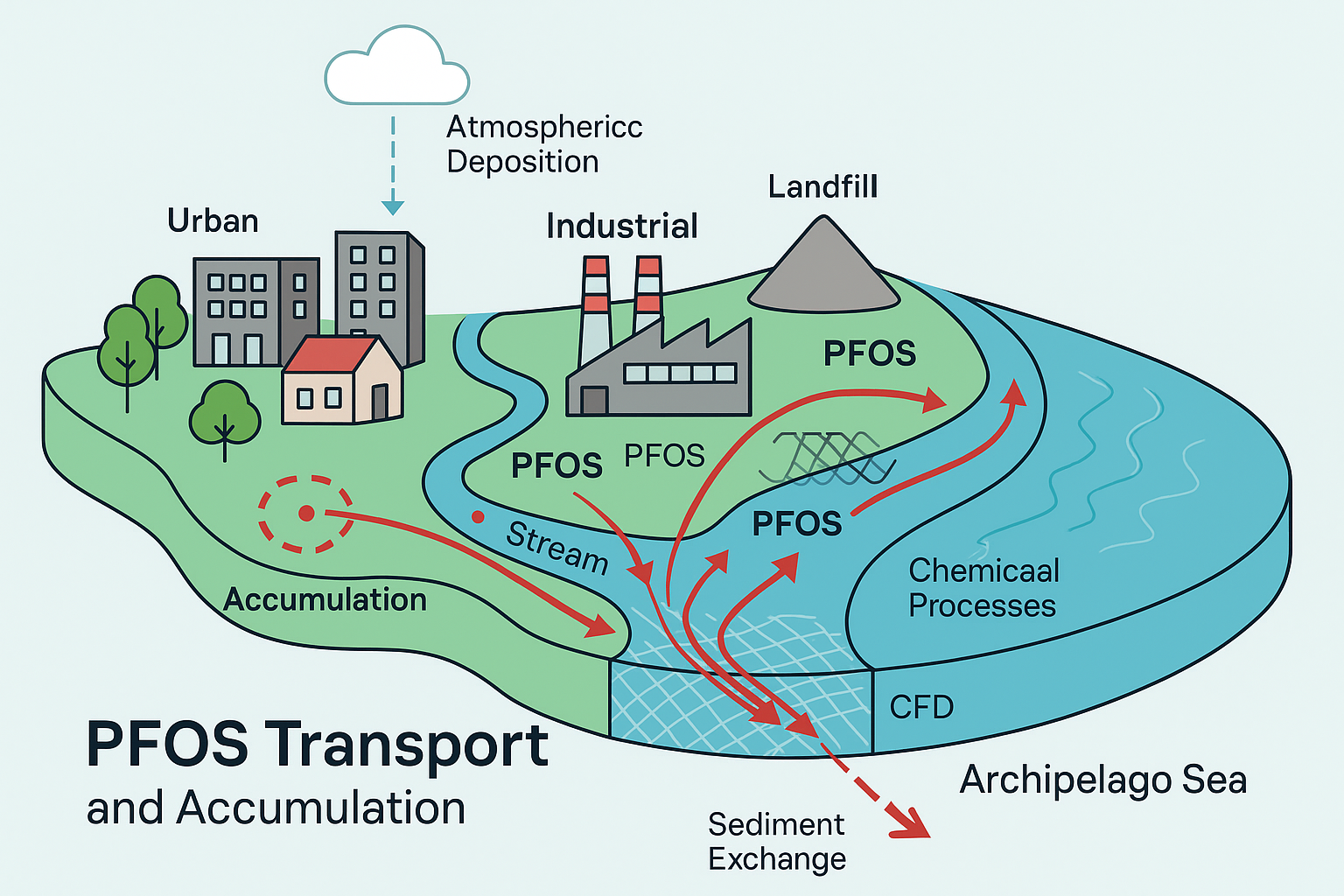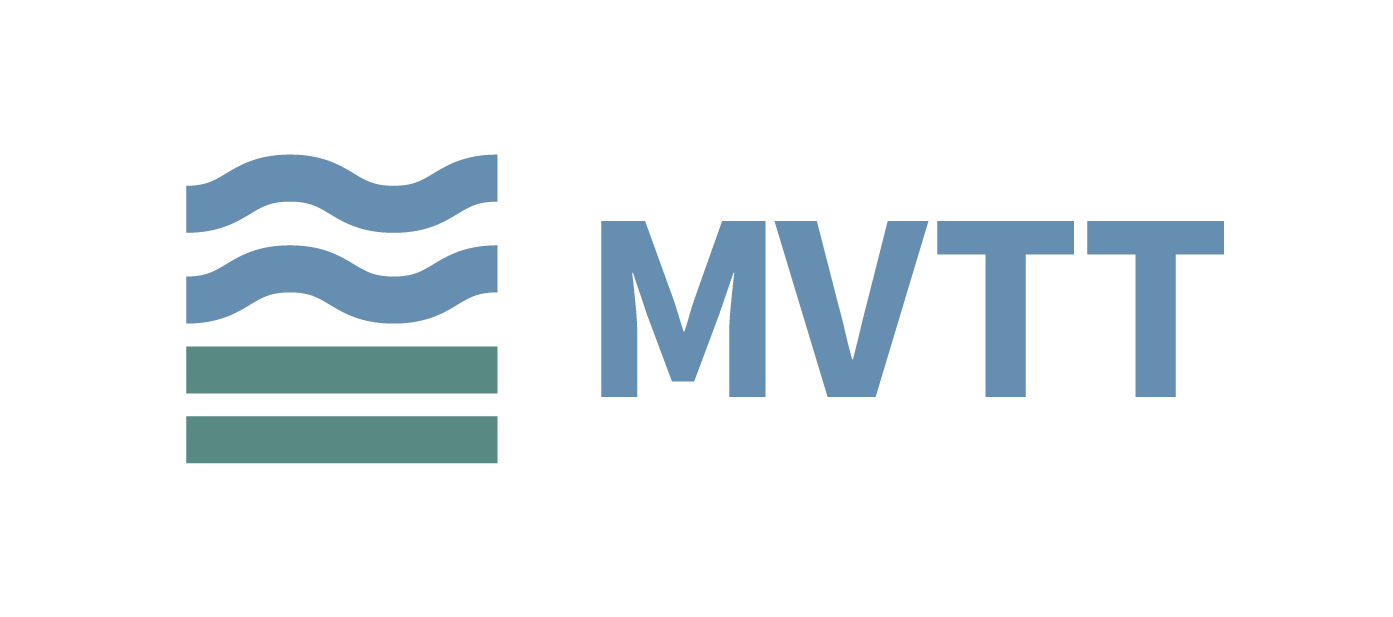TRANSpFOS – Transport, Dispersion, accumulation and Fate of Legacy PFOS in Streams and Receiving Water Bodies

Duration of the project
Source of funding
Maa-ja Vesitekniikan Tuki ry

Total funding
120 000 €
We are developing a high-resolution, computationally efficient 2D-CFD model to study the transport, dispersion and accumulation of PFAS compounds – in particular PFOS – in urban and industrial watersheds. Using the Aurajoki catchment area and Archipelago Sea as a case study, the project will simulate hydrological processes affecting PFAS fate in aquatic systems. The results will help identify PFAS accumulation hotspots, support decision-making, and guide future monitoring efforts. The model will be open-source, enabling wider application and further development.
Open source model for identifying PFOS hotspots without a large-scale monitoring campaign
The TRANSpFOS project aims to address the knowledge gap regarding the transport, dispersion, accumulation, and fate of a legacy PFAS compound, perfluorooctane sulfonate (PFOS), in streams and receiving water bodies..
The project focuses on the Southwest Finland catchment, characterised Focusing on a watershed in southwestern Finland characterized by urban and industrial land uses, including a landfill site, the project seeks to develop a high-resolution but computationally efficient Computational Fluid Dynamics (CFD) model to study the transport and dispersion of PFOS in the selected water bodies and to identify the potential accumulation of the substance in the modeled area.
CFD-based numerical modeling can provide valuable insights into the transport and dispersion of PFAS substances in watersheds enabling the identification of areas of great concern, unknown sources, and accumulated sites with PFAS compounds, without having to perform a large-scale monitoring campaign.
In practice, there exist some computationally efficient 2D hydrological models but those can only be applied to open channels or streams with major applications in flood risk assessment. Importantly, the existing models do not account for advective and/or diffusive transport of PFAS compounds in turbulent conditions nor biological or chemical reactions between various chemical species.
Moreover, these models do not involve thermodynamic effects and as a result many atmospheric processes, such as evaporation and stratifications, are missed entirely. Thus, a computationally efficient and lightweight modeling approach that allows us to model large watersheds (order of 10 km) with relevant physical and thermodynamical processes, is highly needed for understanding the role of PFAS compounds in the nearby water systems.
Three main objectives
- Develop a high-resolution, open-source, computationally efficient 2D-CFD model for simulating the hydrological, physical, thermodynamic and chemical processes associated with PFAS in a specified watershed..
- Investigate the transport, dispersion, and fate of various PFAS compounds in catchment areas, streams, and receiving water bodies, including interactions with sediments.
- Identify potential accumulation areas of PFAS compounds in the catchment area, aiding in the development of targeted mitigation strategies.
Applying the model to the Aurajoki watershed and Archipelago Sea
The project focuses on the Aurajoki drainage area in Southwestern Finland and the adjacent Archipelago Sea as a receiving body. Utilizing data from known point sources, such as the Topinoja landfill site, and atmospheric deposition, the project will model the transport pathways of PFOS. The developed 2D CFD model will incorporate advancements in hydrological modeling, accounting for advective, turbulent, and diffusive transport of PFAS compounds, as well as chemical reactions between various species in the future stage.
Key outcomes: open-source tools, spatial data, and scientific publications
The TRANSpFOS project is expected to yield several important outputs and contribute to scientific research and environmental engineering efforts. These include:
- A publicly available open-source CFD tool for PFAS research.
- Spatial distribution maps of PFOS in the specified watershed.
- Identification of potential accumulation areas of PFOS.
- Refinement of guidelines for managing PFAS contamination.
- Two JUFO-approved research articles.
Project represents a critical step towards understanding and mitigating PFAS contamination, contributing to environmental sustainability and human health protection.
Laying the foundation for broader PFAS monitoring and risk assessment
The outcomes of the TRANSpFOS project will lay the groundwork for a future research project, focusing on source tracking, risk assessment, and optimization of monitoring programs at a larger scale.
Contact us
Partner

Meet the research team
-
Research teams
Computational Engineering and Analysis
-
Research teams
Water and Environmental Protection
See all our projects
We carry out nearly 200 RDI projects annually together with working life and our international partner networks.


